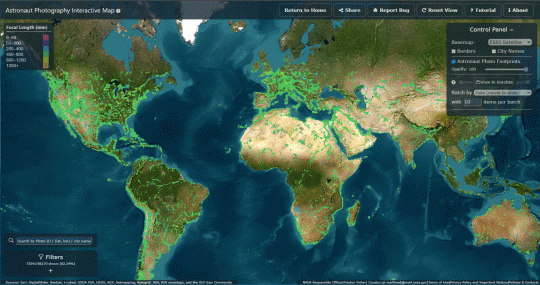ISS043-E-122588
| NASA Photo ID | ISS043-E-122588 |
| Focal Length | 400mm |
| Date taken | 2015.04.16 |
| Time taken | 15:44:24 GMT |
Resolutions offered for this image:
1000 x 851 pixels 540 x 460 pixels 2194 x 2194 pixels 720 x 720 pixels 4928 x 3280 pixels 640 x 426 pixels
1000 x 851 pixels 540 x 460 pixels 2194 x 2194 pixels 720 x 720 pixels 4928 x 3280 pixels 640 x 426 pixels
Country or Geographic Name: | BOLIVIA |
Features: | LAGUNA COLORADA, VOLCANOES, ROADS |
| Features Found Using Machine Learning: | |
Cloud Cover Percentage: | 10 (1-10)% |
Sun Elevation Angle: | 56° |
Sun Azimuth: | 21° |
Camera: | Nikon D4 Electronic Still Camera |
Focal Length: | 400mm |
Camera Tilt: | 06 degrees |
Format: | 4928E: 4928 x 3280 pixel CMOS sensor, 36.0mm x 23.9mm, total pixels: 16.6 million, Nikon FX format |
Film Exposure: | |
| Additional Information | |
| Width | Height | Annotated | Cropped | Purpose | Links |
|---|---|---|---|---|---|
| 1000 pixels | 851 pixels | No | Yes | Earth From Space collection | Download Image |
| 540 pixels | 460 pixels | Yes | Yes | Earth From Space collection | Download Image |
| 2194 pixels | 2194 pixels | No | Yes | NASA's Earth Observatory web site | Download Image |
| 720 pixels | 720 pixels | Yes | Yes | NASA's Earth Observatory web site | Download Image |
| 4928 pixels | 3280 pixels | No | No | Download Image | |
| 640 pixels | 426 pixels | No | No | Download Image |
Download Packaged File
Download a Google Earth KML for this Image
View photo footprint information
Download a GeoTIFF for this photo
Image Caption: Laguna Colorada, Bolivia
Astronauts aboard the International Space Station took this detailed image of the brightly colored Laguna Colorada, unique in this part of the Bolivian Andes Mountains and a well-known feature to astronauts. The lack of atmospheric haze at great altitude--the lake lies at 4300 m above sea level (14,100 feet)--helps make images of the region especially clear. The strong red-brown color of this shallow, 10 km-long lake is derived from algae that thrive in its salty water. But the lake occasionally has green phases because different algae display different colors, the type being determined by the changing salinity and temperature of the water. As the lake water evaporates in the desert climate it becomes saline. Snow-capped volcanoes appear image top center and lower left. Ancient shorelines show that the lake has been larger in the past.
Laguna Colorada is the center of a wild-life reserve (listed in 1990 as a "Ramsar Wetland of International Importance")and home to large numbers of flamingo. Access roads on three sides of the lake are used by tourists who visit these other-worldly landscapes.
Astronauts aboard the International Space Station took this detailed image of the brightly colored Laguna Colorada, unique in this part of the Bolivian Andes Mountains and a well-known feature to astronauts. The lack of atmospheric haze at great altitude--the lake lies at 4300 m above sea level (14,100 feet)--helps make images of the region especially clear. The strong red-brown color of this shallow, 10 km-long lake is derived from algae that thrive in its salty water. But the lake occasionally has green phases because different algae display different colors, the type being determined by the changing salinity and temperature of the water. As the lake water evaporates in the desert climate it becomes saline. Snow-capped volcanoes appear image top center and lower left. Ancient shorelines show that the lake has been larger in the past.
Laguna Colorada is the center of a wild-life reserve (listed in 1990 as a "Ramsar Wetland of International Importance")and home to large numbers of flamingo. Access roads on three sides of the lake are used by tourists who visit these other-worldly landscapes.




